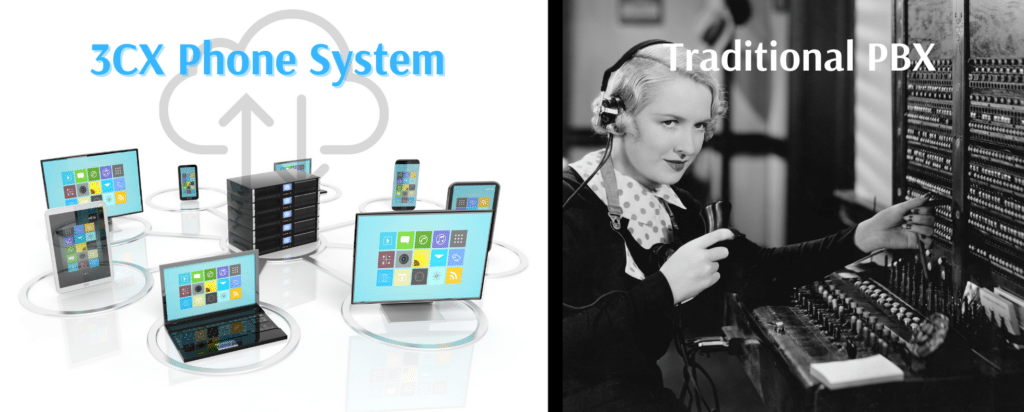Comparing 3CX Phone System vs. Traditional PBX: A Comprehensive Analysis

With the relentless march of technology and the constant changes in the communications industry, businesses have various choices regarding telephony solutions. The 3CX Phone System and the traditional Private Branch Exchange (PBX) system are two of the most prominent systems in today’s market. At Next Wave Communications, as partners of 3CX, we believe in staying informed about all available options, ensuring that our clients make the best decision for their unique needs. Let’s dive into a comprehensive comparison of these two systems to understand their strengths and weaknesses. You’ll find out why businesses are opting for 3CX phone system.
What is 3CX Phone System?
3CX is a software-based IP phone system that offers unified communications solutions. Instead of relying on physical hardware, as with traditional PBX, 3CX utilizes a software platform, allowing greater flexibility and scalability.
What is Traditional PBX?
PBX, or Private Branch Exchange, refers to the traditional telephony system that has been around for decades. It is a physical hardware system that connects phone lines in an organization to external public switched telephone networks (PSTN).
Key Differences
Deployment and Scalability:
- 3CX: Being software-based, 3CX can be deployed on-premise on your existing servers or in the cloud. This allows businesses to scale up or down based on their needs without significant capital expenditures.
- Traditional PBX: Physical hardware is necessary, often requiring significant upfront costs and longer lead times to expand or scale down.
Flexibility & Integration:
- 3CX: Can easily be integrated with CRM systems, offers web conferencing capabilities, and supports remote working with easy mobile application setups.
- Traditional PBX: Limited to basic phone functionalities and offers fewer integration opportunities.
Cost:
- 3CX: Typically, it has a lower total cost of ownership. There’s no need for separate phone wiring, making maintenance more straightforward and cost-effective. Licensing costs can also be more competitive than traditional systems.
- Traditional PBX: Higher upfront hardware costs. Maintenance and expansion can also be pricier, given the physical components involved.
Mobility and Remote Work:
3CX: Provides native apps for Android and iOS, allowing employees to use their office extension from anywhere. WebRTC technology also allows for web conferencing without additional plugins or setups.
Traditional PBX: Limited mobile capabilities, often requiring third-party solutions or forward setups to cater to remote workers.
Reliability and Redundancy:
3CX: Cloud deployments can take advantage of multiple server locations, ensuring uninterrupted service. On-premise deployments benefit from virtualization for redundancy.
Traditional PBX: Relies heavily on physical hardware, which can be susceptible to damages or failures. Redundancy usually involves extra cost and additional setups.
Final Thoughts
The right phone system for your business depends on your specific needs, goals, and infrastructure. While traditional PBX systems have served businesses reliably for years, the modern era demands flexibility, mobility, and scalability – areas where 3CX excels.
At Next Wave Communications, as a dedicated 3CX partner, we’ve seen firsthand the transformative power of the 3CX Phone System for businesses of all sizes. If you’re considering a switch or are looking for more information, reach out to our team. We’re here to guide you into the next wave of business communications.

Troy Doud
3CX PBX Expert - Telecommunications and IT Professional | Eternal Student
Helpful guide for business tech challenges





